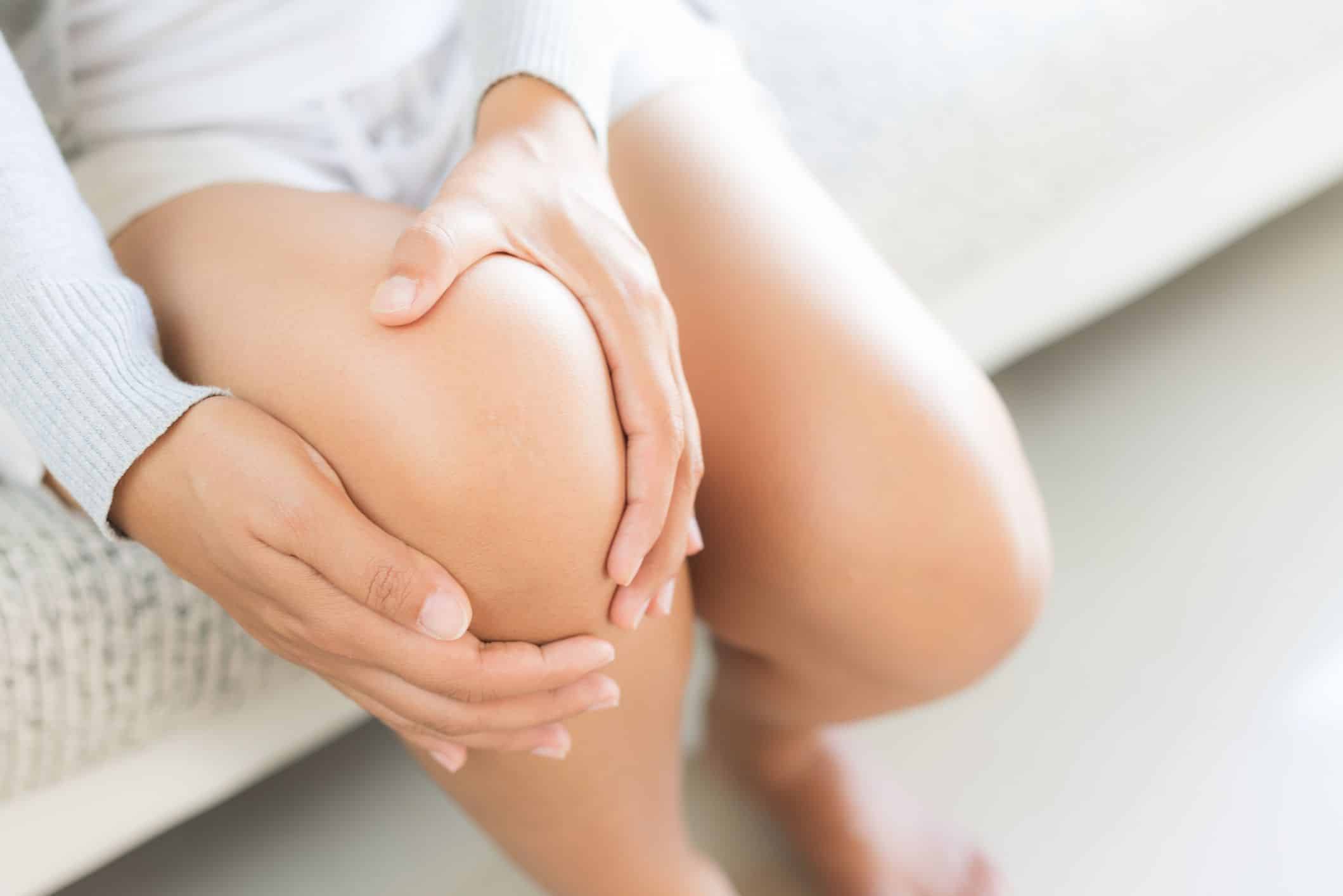
Knee pain ? What are the different knee pains? When do you come to see your osteopath for your knee?
Gonalgia
Gonalgia refers to pain in one or both knees. The knee joint is made up of 3 bones: the femur, the tibia and the kneecap. Knee cartilage covers the end of each piece of bone. The knee is stabilized by numerous ligaments including the anterior and posterior cruciate ligaments, as well as the internal and external collateral ligaments. Many muscles are also responsible for its stability and mobility: the quadriceps and its patellar tendon and the hamstrings, for the most important. In addition, the knee also has 2 “shock absorbers”: the menisci, internal and external, 2 collagen discs, present between the tibia and the femur. Each of the components of the joint can therefore be the source of pain. First, the osteopath will analyze the situation and perform clinical tests in order to possibly redirect you to a specialist or your general practitioner for additional examinations in the case of so-called organic pathologies such as a sprain or a dislocation of knee, for example.
Ligament injuries
A ligament injury is a distension of one of the ligaments in the knee (or a sprain) or can also be a total rupture of the ligament (or a severe sprain). The anterior or posterior cruciate ligaments and collateral ligaments are the main ligaments involved in a sprained knee.
Symptoms: Acute pain depending on the grade of the lesion, with joint instability. Potential cracking noise during the incident. Possible swelling of the knee.
Cause: Abrupt pivot shift when the feet are fixed to the ground, direct trauma to the knee, poor reception of hyperflexion or hyperextension jump… Very common in sports such as skiing or football.
Meniscal lesions
A meniscal injury is damage to the internal or external meniscus, or both. It can be of traumatic origin (meniscal tear, partial dislocation of the meniscus) or degenerative (in the context of osteoarthritis with an excess of stress on the meniscus, degeneration of the meniscal tissue).
Symptoms: Pain on the femoral-tibial interline often episodic and triggered by certain movements, especially when pivoting with the knee flexed. Swelling. Feeling of blockage and jerkiness in the joint. Decreased mobility of the knee.
Cause: Pivot shift movement or raising from a seated position in traumatic meniscus injury, associated osteoarthritis, or age-related degeneration in degenerative meniscus injury.
The “terrible triad” or “unhappy triad”
It is a combination of a tear in the anterior cruciate ligament, medial meniscus and medial collateral ligament. Relatively frequent in skiing, always in this famous pivot shift movement.
Dislocations
Knee dislocation is a dislocation of the tibia from the femur, following a tear of at least 2 of the 4 main ligaments. It can also be a dislocation of the kneecap, which dislocates towards the outside of the knee, also causing ligament damage. In most cases, the dislocated knee will return to its normal and original position.
Symptoms: Sharp pain with deformity of the knee joint and instability.
Cause: Violent trauma such as a car accident or severe sports accidents. Congenital malformation in most patellar dislocations.
Patellar or patello femoral syndrome
Patellar syndrome is anterior knee pain in the patella, resulting from improper routing of the patella during flexion of the knee that causes excessive compression in the patellar facets.
Symptoms: Anterior knee pain, especially in movements where the knee is flexed, especially when going down stairs, playing sports or sitting for prolonged periods of time.
Cause: Mainly accident or excessive stress. But it can also be an anatomical abnormality, muscle dysfunction or poor biomechanics of the lower limbs.
Tendinopathies Knee
Tendinopathies can affect various muscle tendons involved in the mobility of the knee: patellar tendinitis (tendonitis of the patellar tendon, final extremity of the quadriceps), tendinitis of the crow’s feet (involving 3 muscles: the gracili, the semi-tendinous as well as the sartorius, joining on the postero-medial aspect of the knee), the tendonitis of the fascia-lata or more commonly called the “syndrome of the wiper”. Tendinopaths can be inflammation of the tendon or its sheath, or progressive deterioration of the tendon.
Symptoms: Knee pain amplified by moving, stiffness, a feeling of weakness in the tendons, possible swelling of the knee with a feeling of heat.
Cause: Excessive strain on the tendon due to a sudden change in volume and / or intensity of sports practice or repeated daily movements.
Osteoarthritis
Osteoarthritis of the knee is a progressive wear and tear of the cartilage through degeneration, usually after the age of 50. However, sometimes it can occur earlier. Osteoarthritis can often be asymptomatic.
Symptoms: Pain with limited mobility of the knee, swelling.
Causes: Mainly age. There may also be risk factors such as heredity or repetitive strain injuries during physical or professional activity.
Good advice to avoid knee pain
Good warm-up before sports practice
Progressive and reasoned physical activity: Exercise is extremely beneficial.
But be careful, adjust your physical activity. Going from 2 hours of sport per week to 10 hours suddenly is the best way to injure yourself.
Likewise, the integration of more intensive sessions such as the interval must be done gradually.
Specific muscle strengthening of the different muscle groups of the lower limbs to optimize the stability of the joint: In particular before resuming episodic sporting activity such as winter sports, which are particularly restrictive on the knee.
Weight control
Stress reduction.

